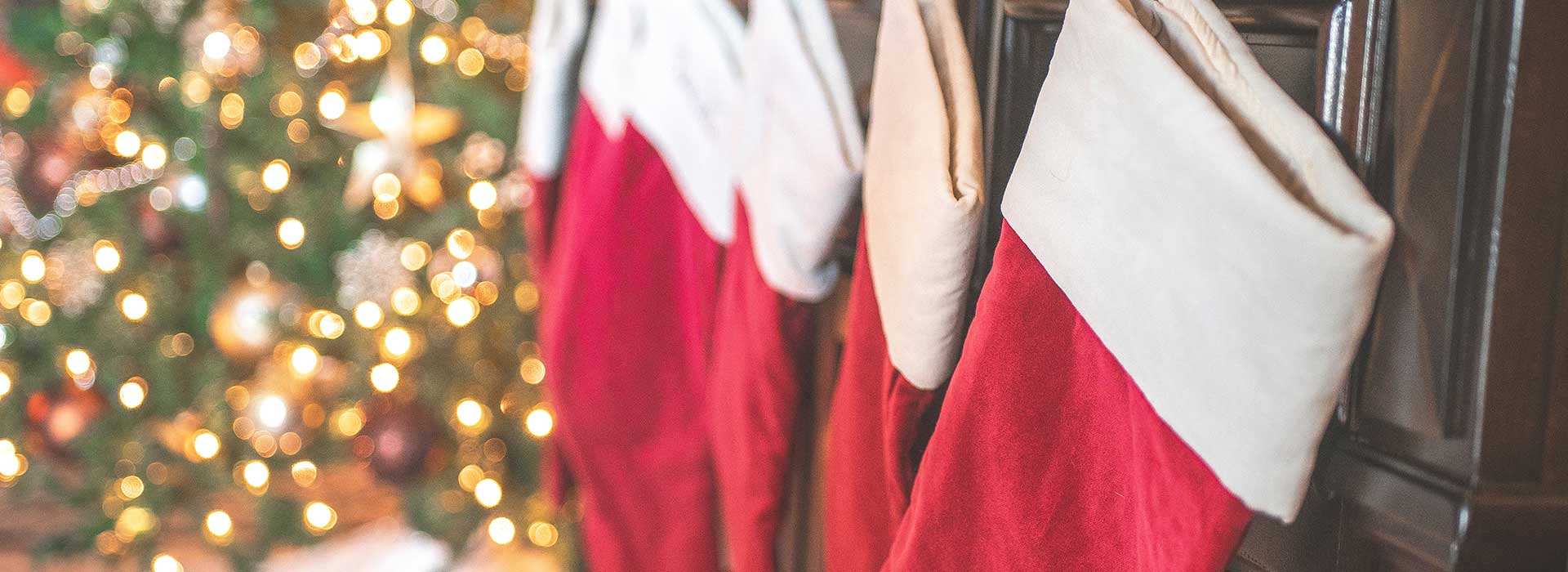It is more critical than ever for brands to do their part to help protect the environment and become more sustainable. One reason for the increasing pressure for companies to go green, is consumers are increasingly spending their money with companies they feel are doing their part to help the environment. More than 60% of millennials say they would pay more for eco-friendly products, and 62% of consumers in the U.K. and the U.S. believe eco-friendly products are better for their health. [1] For many organizations, their environmental goals begin internally, with a company culture that encourages cutting out waste and other sustainable practices such as carpooling and going paperless. What often gets overlooked, however, are the extravagant office get-togethers. If you are planning on throwing or attending an office Christmas party this year, then now is the time to take a look at the typical environmental impact and learn how to reduce it. As you do so, your company culture will be enriched, and you will be one step closer to being known for your environmental efforts.
What Is the Carbon Footprint of a Typical Christmas Party?
The size of your party’s carbon footprint depends on hundreds of different factors. From the venue and the food to the gifts and decorations, the footprint can go up or down, depending on a thousand little decisions you make. For example, parties for a large company, complete with dinner and dancing, might be closer to the footprint of a wedding at around 62 tons of carbon. While a smaller event at a local restaurant or an office break room would have a much smaller footprint.
Christmas Parties Increase Greenhouse Gas Emissions
Carbon is just one of several possible greenhouse gasses (GHG) that could be produced as a result of your party planning. These gasses are the result of burning fossil fuels for things like electricity, heating the building, and transporting your food and gifts. Greenhouse gases include the following: [2]
- Water vapor
- Carbon dioxide (CO2)
- Methane
- Nitrous oxide
- Chlorofluorocarbons (CFCs)
The Environmental Costs of Office Christmas Parties
As we mentioned above, countless factors go into determining the real environmental impact of your party. However, some make a larger difference than others, including what you choose to eat and how attendees choose to travel to and from the party. Below are some of the key contributors to a Christmas carbon footprint and some greener alternatives to the usual holiday fare.
Food
The environmental impact of food production and waste is staggering. According to a report by the Natural Resources Defense Council, food production accounts for 10% of the total U.S. energy budget and uses up 80% of all freshwater consumed in the U.S. [3] While the food you serve contributes to that number, it may be even worse for imported cheeses or wines popular at Christmas time, because they have to travel long distances in carbon-polluting ships, trucks, and trains.
Transportation
Getting to and from work every day produces a significant carbon footprint. For a 10 mile commute, it could be anywhere from 1.4 to 3.8 tons of carbon per year depending on the size and model of your car. To make matters worse, 93% of commuters are making their commute alone. [4] Whether you have your party at the office or offsite, everyone driving there is sure to increase the carbon footprint of the party.
HVAC
For many, Christmas time means cold weather and large heating bills, and unless you want your attendees to freeze, that means your HVAC system will be running overtime. According to one study, 42% of carbon emissions in cities like New York are a direct result of all of the heating and hot water demands of its residents. [5]
Energy Use
From the Christmas lights to the sound system, holiday parties are usually filled with things that require large amounts of energy. Unless your energy grid is supplied by renewable sources, then all of that coal, oil, and natural gas that it takes to keep things running will have a significant impact on the environment, including decreased water and air quality. [6]
Stuff You Buy
What holiday work party is complete without some presents, prizes, centerpieces, and decorations? The problem is all that stuff will eventually end up in a landfill. And worse yet, the plastic pieces could end up floating in the ocean. By some estimates, the problem is widespread, with 125,000 tonnes of plastic packaging for gifts being used up in one year in the U.K. alone. [7]
How to Reduce the Carbon Footprint of Your Christmas Party?
While the environmental outlook for this year’s office Christmas party may seem bleak, don’t get discouraged just yet. With the proper planning and effort, your party can go green this year by following some of the simple tips below.
Buy Local & Reduce Food Waste
Lucky for your taste buds, there are ways to enjoy good eats without all the guilt. When selecting the appetizers, main dishes, desserts, and more, always opt for local foods with shorter traveling distances. Also, have a plan for your food waste. Save those leftovers from the landfill and consider having attendees take them home or make a plan to donate them to a food bank or homeless shelter whenever possible.
Organize Ride Shares
Reducing the number of cars driving to your celebration will reduce GHG emissions and improve the sustainability of your event. Encourage participants to carpool, and if the party is located away from the office, consider a place that is within walking distance or contract out other environmentally-friendly transportation options.
Reduce Energy Consumption & Switch to LED Lights
Reduce your impact by reducing the amount of electricity your party consumes. Consider dimming the lights, lowering the heat, and switching to more energy-efficient LED light bulbs for your tree and other Christmas decorations.
Reduce, Reuse, & Recycle
While your office should be offering sustainable recycling and waste management programs all year long, there is no better time to start than with your next holiday party. Use recyclable plates, cups, utensils, and more. Also, whenever possible, reuse older decorations and be sure to recycle everything during clean up.
Offset Your Christmas Party’s Carbon Footprint
While the tips above will give you an incredible start towards producing a green event for your company, there will still be many things that are simply unavoidable with a traditional party. Consider going one step further and celebrating with a carbon-neutral event by taking advantage of carbon offsets. The offset experts at Terrapass can help your company estimate their footprint and create an offset plan to counterbalance the impact. Party goers will be able to enjoy the fun and feel better about attending an event that is as good for the environment as it is for their holiday spirit. Get started today by giving us a call or checking out our free online carbon calculator.
Brought to you by terrapass.com
SOURCES:
- Young, Katie. “Consumers Going Green: Everything You Need to Know.” GlobalWebIndex Blog, 27 Nov. 2019, blog.globalwebindex.com/chart-of-the-week/green-consumerism/.
- “The Causes of Climate Change.” NASA, NASA, 30 Sept. 2019, climate.nasa.gov/causes/.
- D. Gunders. “Wasted: How America Is Losing Up to 40 Percent of Its Food from Farm to Fork to Landfill.” https://www.nrdc.org/sites/default/files/wasted-food-IP.pdf.
- Mckimmy, Matt. “How Commuting Impacts the Environment.” RideAmigos, Matt Mckimmy Https://Rideamigos.com/Wp-Content/Uploads/2016/12/Ra-Asphalt-600×175.Png, 19 June 2019, rideamigos.com/blog/commuting-impacts-environment/.
- Cho, Renee, et al. “Heating Buildings Leaves a Huge Carbon Footprint, But There’s a Fix For It.” State of the Planet, 15 Jan. 2019, blogs.ei.columbia.edu/2019/01/15/heat-pumps-home-heating/.
- “Environmental Impacts of Renewable Energy Technologies.” Union of Concerned Scientists, www.ucsusa.org/resources/environmental-impacts-renewable-energy-technologies.
- Barney Cotton. “The Dark Environmental Impacts of Our Christmas Season: Business Leader News.” Business Leader, 14 Dec. 2018, www.businessleader.co.uk/the-dark-environmental-impacts-of-our-christmas-season/57161/.







